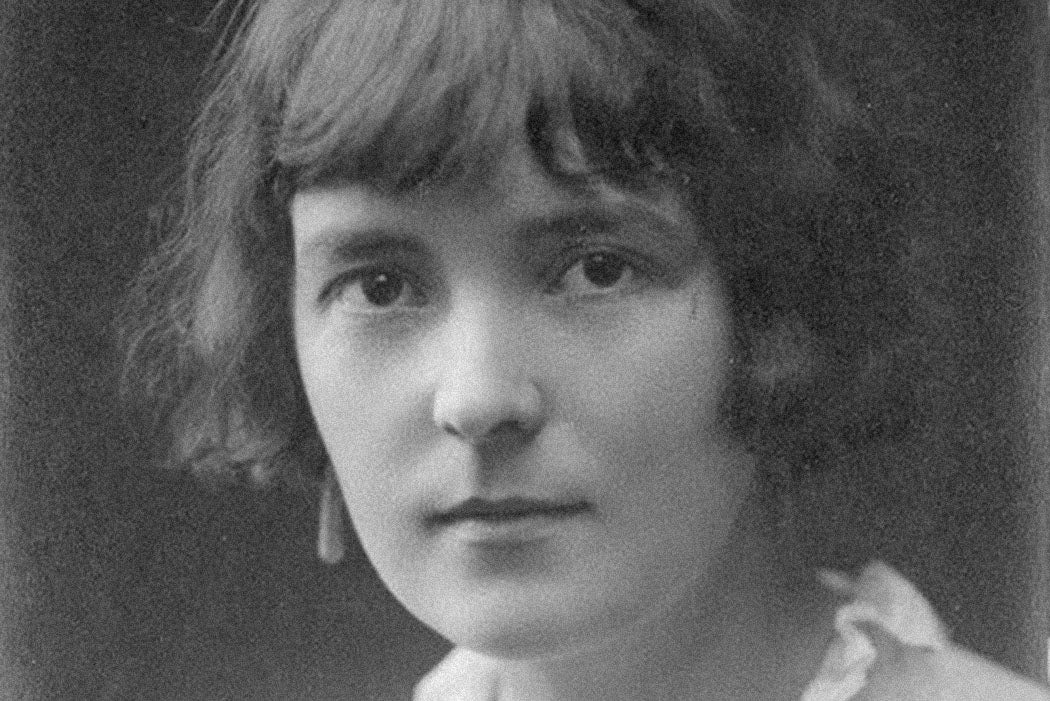The year 1909 was a rough one for New Zealand author Katherine Mansfield. The consequences of many bad life decisions were caving in on her. Not only had she abandoned her first husband—originally her singing instructor, George Bowden—on their wedding night and was she pregnant with another man’s child, but her humiliated mother had deposited her at an isolated spa town in Bavaria, Germany, to hide her from respectable society. Mansfield was all alone, cut off from family and friends, and had bleak prospects. Is it any wonder that, for comfort and mentorship for her writing work, she turned to an older artist who couldn’t hurt her?
Mansfield was primarily a short story writer, and was determined to be a pioneer in the craft. The early twentieth-century world of English-language literature, though saturated with novels, plays, and poetry, didn’t yet have sophisticated, established guidelines for short stories. Russian literature did. Its star creator of stories was Anton Chekhov, and Mansfield latched on to him—or at least his work. He’d been deceased since 1904, but even so, she found in him an upstanding and reliable parental figure who seemed to understand her, unlike her real-life mother and father.
“The mention of Katherine Mansfield always brings to mind her chief master in the short story, Chekhov. Not merely does she resemble Chekhov in her sensitive feeling-tone,” wrote literary critic and poet Joseph Warren Beach in 1951, but
she suggests him also by her tendency to subordinate incident to mood, and by many other features of technique that follow from this. One is tempted to say that Katherine Mansfield was a Chekhov character—one of the strongest of his characters; there was so much in her experience of loneliness and frustration, the “contradiction of the apparent by the real,” of the ideal by the actual, which recurs so frequently in the people of his stories.
Lonely in Bavaria, Mansfield had what might be considered her copycat (or emulation) phase, immersing herself in Chekhov’s fictional world of underdogs and social commentary. One result of this deep dive into his writing was her 1910 “The-Child-Who-Was-Tired,” inarguably a plagiarism of Chekhov’s 1888 “Sleepy.”
“The-Child-Who-Was-Tired” first appeared in the avant-garde magazine The New Age, to which Mansfield’s friend and occasional lover Beatrice Hastings contributed, and was later included in her 1911 collection In a German Pension. Both publications were instrumental in introducing Mansfield to England’s literary social set and moving her career forward. But the story can’t be classified as a fanfiction or a deliberate tribute. The two stories are almost identical; if “The-Child-Who-Was-Tired” had been the result of a university assignment, Mansfield likely would have faced expulsion. Given her fragile emotional state and desperation for some sort of success and security in her life, she can perhaps be forgiven for this transgression.
Weekly Newsletter
Something about Chekhov’s tragic tale of an abused and dangerously sleep-deprived child servant must have struck something deep within Mansfield, who was perpetually sensitive to class disparities and the casual violence that often came with being poor and unprotected. These themes would reappear later in her more original short stories, including “The Garden Party” and “The Woman at the Store,” both written when real confidence had set in and she had developed her own voice at as a writer. She would never surrender her love for Chekhov, but she graduated from being his pupil to becoming a belated colleague.







